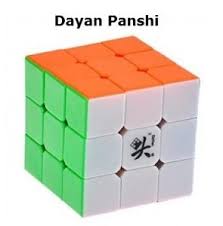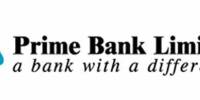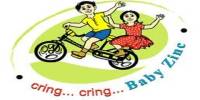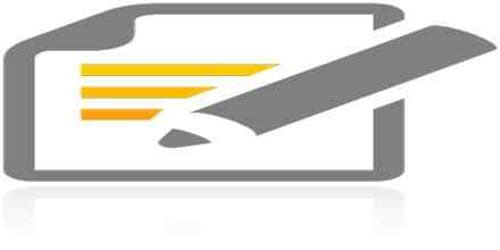Origin of the report:
Internship in private business organizations, government offices, public sector corporations or banks or other not-bank financial institutions is an integral part of the BBA program of the business faculty of the Southeast University. The objective of the program is to expose the students in the organizational work situation. Each student is required to undergo the rogram and prepare a report according to a format specified by the supervision teacher.
As a regular student of Masters of Business Administration (BBA) program, it requires an internship attachment with an organization followed by writing and submission of a report. This report is an end result of an Internship attachment with one of the top graded Export Oriented Composite Garment in Bangladesh the PANSHI knit (Pvt.) Limited. As per the advice and recommendations of the honorable Supervisors Mr. Bakhtiar Rana, the main concentration of this report is Garment Industry of Bangladesh particular reference to Export Procedure and the problems emerging in export procedue. This report focuses on the practices of export system of the PANSHI knit (Pvt.) Limited. This report will obviously increase the existing idea of export procedure rendered by the PANSHI knit (Pvt.).
Objective of the report:
To understand the export procedure of PANSHI Knit (Pvt.)s Ltd.
To ascertain the problems in knit wear exporting by PANSHI Knit (Pvt.)s Ltd.
To give recommendations to address the problems that PANSHI Knit (Pvt.)s Ltd. aces in Knit Wear exporting.
Methodology:
The study requires a systematic procedure from selection of the topic to preparation of the final report. To perform the study, the data sources were to be identified and collected; to be classified, analyzed, interpreted and presented in a systematic manner and key points were to be found out. The over all process of methodology has been given as below:
A. Selection of the topic: The topic of the study was assigned by the respected supervisor. While assigning the topic necessary recommendations and suggestions were provided by the supervisor to make this internship report a well organized and perfect one.
B. Identifying data sources: Essential data sources, both primary and secondary, were identified that would be needed to carry on the study and complete this report.
i) The primary data sources:
- Face to face conversation with the officers
- Practical desk work
- Relevant file study as provided by the concerned officers.
ii) Secondary data sources:
- Different official circulars issued by the BGMEA.
- Annual reports of the PANSHI knit (Pvt.) Limited.
- Company profile of the PANSHI knit (Pvt.) Limited.
C. Data Collection: Primary data were collected through direct and face to face interview of the different personnel of the PANSHI knit (Pvt.) Limited.
D. Classification, analysis, interpretations and presentation of data: Some pictorial tools are used in this report for analyzing the collected data and to classifying those to interpret them in a clear and understandable manner.
E. Findings of the study: The collected data were scrutinized and were pointed out and shown as findings. Few recommendations are also made for improvement of the current situation.
F. Final report preparation: On the basis of the suggestions of the supervisor, some corrections were made to present the paper in this form.
Limitations:
Some of the limitations of the report are:
1. Personal biasness of the officers at the time of collecting primary data.
2. Accuracy of the secondary data depends upon the accuracy of the
secondary source as Cross checking was not possible
3. Due to confidentiality the garment’s policy restricts disclosing some
important data.
4. Deficiencies in Data required for the study.
5. Field practice varies with the standard practice that also created
problem.
6. Time provided for conducting the study is another important constraint.
Chapter Two: An Overview of Garment Industry of Bangladesh
History of Bangladesh Garments
The domestic market for readymade garment, excepting children wears and men’s knit underwear (genji) was virtually non-existent in Bangladesh until the sixties. Large-scale production of readymade garments (RMG) in organized factories is a relatively new phenomenon in Bangladesh. Until early sixties, individual tailors made garments as per specifications provided by individual customers who supplied the fabrics.
Since the late 1970s, the RMG (Ready Made Garments) industry started developing in Bangladesh primarily as an export-oriented industry although, the domestic market for RMG has been increasing fast due to increase in personal disposable income and change in life style. The sector rapidly attained high importance in terms of employment, foreign exchange earnings and its contribution to GDP. In 1999, the industry employed directly more than 1.4 million workers, about 80% of whom were female. With the growth of RMG industry, linkage industries supplying fabrics, yarns, accessories, packaging materials, etc. have also expanded. In addition, demand for services like transportation, banking, shipping and insurance has increased. All these have created additional employment. The total indirect employment created by the RMG industry in Bangladesh is estimated to be some 200,000 workers. (Textile sector of Bangladesh offers best invest opportunity in South Asia, by Redwan Ahmed).
Contribution to the Society
In addition to its economic contribution, the expansion of the RMG industry has caused noticeable social changes by bringing more than 1.12 million women into labour force. The economic empowerment of these working girls/women has changed their status in the family. The attractive opportunity of employment has changed the traditional patriarchal hegemony of the fathers, brothers and husbands. Most working women/girls can now chose when to get married or become mothers. The number of early marriages is decreasing; so is the birth rate; and the working girls tend to send their little bothers and sisters to school, as a result, the literacy rate is increasing. They can participate in family decision-making. Most importantly, the growth of RMG sector produced a group of entrepreneurs who have created a strong private sector. Of these entrepreneurs, a sizeable number is female. A woman entrepreneur established one of the oldest export-oriented garment factories, the Baishakhi Garment in 1977. Many women hold top executive positions in RMG industry.
Development of Bangladesh Garments Industry
Till the end of 1982, there were only 47 garment manufacturing units. The breakthrough occurred in 1984-85, when the number of garment factories increased to 587. The number of RMG factories shot up to around 2,900 in 1999. Bangladesh is now one of the 12 largest apparel exporters of the world, the sixth largest supplier in the US market and the fifth largest supplier of T-shirts in the EU market. The industry has grown during the 1990s roughly at the rate of 22%. In the past, until 1980, JUTE and jute goods topped the list of merchandises exported from Bangladesh and contributed more than 50% of the total export earnings. By late 1980s, RMG exports replaced jute and jute goods and became the number one in terms of exports.
In 1983-84, RMG exports earned only $0.9 billion, which was 3.89% of the total export earnings of Bangladesh. In 1998-99, the export earnings of the RMG sector were $5.51 billion, which was 75.67% of the total export earnings of the country. The net foreign exchange earnings were, however, only about 30% of the figures quoted above because approximately 70% of foreign exchanges earned were spent in importing the raw materials and accessories to produce the garments exported.
Both external and internal factors contributed to the phenomenal growth of RMG sector. One external factor was the application of the GATT-approved Multifibre Arrangement (MFA) which accelerated international relocation of garment production. Under MFA, large mporters of RMG like USA and Canada imposed quota restrictions, which limited export of apparels from countries like Hong Kong, South Korea, Singapore, Taiwan, Thailand, Malaysia, Indonesia, Sri Lanka and India to USA and Canada. On the other hand, application of MFA worked as a blessing for Bangladesh. As a least developed country, Bangladesh received preferential treatment from the USA and European Union (EU). Initially Bangladesh was granted quota-free status. To maintain competitive edge in the world markets, the traditionally large suppliers/producers of apparels followed a strategy of relocating RMG factories in countries, which were free from quota restrictions and at the same time had enough trainable cheap labour. They found Bangladesh as a promising country. So RMG industry grew in Bangladesh.
By 1985, Bangladesh emerged as a strong apparel supplier and became a powerful competitor for traditional suppliers in the US, Canadian and European markets. Since 1986, Bangladesh has been increasingly subjected to quota restrictions by USA and Canada. RMG industry suffered setback in a number of countries in the 1980s. Some countries had internal problems, for example, Sri Lanka; and some other countries of Southeast Asia experienced rapid increase in labour cost. Buyers looked for alternative sources. Bangladesh was an ideal one as it had both cheap labour and large export quotas. The EU continued to grant Bangladesh quota-free status and GSP privileges. In addition, USA and Canada allocated substantially large quotas to Bangladesh. These privileges guaranteed Bangladesh assured markets for its garments in USA, Canada and EU. The domestic factor that contributed to the growth of RMG industry was the comparative advantage Bangladesh enjoyed in garment production because of low labour cost and availability of almost unlimited number of trainable cheap labour. The domestic policies of the government contributed to the rapid growth of this sector. The government provided various kinds of incentives such as duty-free import of fabrics under back-toback L/C, bonded warehouse facilities, concessionary rates of interest, cash export incentive, export processing zone facilities, etc. The government also took a number of pragmatic steps to streamline export-import formalities.
Products of Bangladesh Garments industry
Bangladesh exports a very limited category of products. The factories in Bangladesh produce shirts, jackets, trousers, and other garments, with high concentration (about 60% of the total apparel exports) in the export of shirts of low price. Bangladesh is the largest exporter of men’s and boys’ cotton shirts in the US market. In this market, it competes with India, Sri Lanka, Mexico and other Central American countries in the lower price segment. The average price of Bangladesh-made shirts was $60.74 per dozen in 1998. This price was the second lowest. The Dominican Republic sold the lowest priced shirts of the same category at $52.79 per dozen. Prices of Indian, Mexican and Sri Lankan shirts were $81.04, $73.26 and $72.77 respectively. Against this, the prices of Hong Kong and Malaysia shirts were $109.34 and $135.08 respectively. Exporters from Bangladesh produce mostly those items on which quotas are available. However, there are a few exceptions. Some South Korean firms operating from Export Processing Zones of Dhaka and CHITTAGONG export padded jacket and trousers of higher value. Many firms now export some non-quota items as well. The share of such items in the total quantity, however, is very small. Recently, export of knitwear and sweaters has increased faster than that of woven wears. These indicate that Bangladesh is actively engaged in the process of product diversification. (Chowdhury, J.A.J (1987) “Garment Industry in Bangladesh: its problems and prospect”)
Markets of Bangladesh garments industry
Although Bangladesh exports garments to some 30 countries, its exports are highly concentrated in two major markets, the USA and EU. The USA as the largest importer country imported 42.24% of total garments exported from Bangladesh in 1998-99. Bangladesh was the sixth largest supplier of apparels in the US markets in the same year. However, if European Union is considered as a single market, the US market becomes the second largest. Bangladesh exported 50.38% of its apparel exports to the EU in 1998- 99. The EU is the single most important destination of knitwear export from Bangladesh. Of the individual members of the EU, Germany is the largest importer of both woven RMG (14.6%) and knitwear’s (13.8%) from Bangladesh and it is followed by the UK and France. The EU as a bloc has been importing from Bangladesh an increasing quantity of apparels. In the last five years Bangladesh’s exports to the EU have grown by 174%. The main reason for this phenomenal growth is the almost duty free (due to GSP privileges) and quota-free access to this market. Other export markets are small. Japan and ASEAN countries are potentially large markets. Bangladesh has not yet been able to export sizeable quantity of apparels to Japan, although it imports about 90% of the machinery from Japan to run the apparel industry. Similarly, Bangladesh has not been able to have market access to ASEAN, or Indian markets although it imports a huge quantity of fabrics and yarn from these countries. The main reasons for this are the tariff and nontariff barriers Bangladesh faces in these markets. Recently, Bangladesh has started exporting to India, South Korea and other new markets. As a member of South Asian Association of Regional Cooperation (SAARC), Bangladesh has undertaken an elaborate programme to increase apparel exports to India and other member countries of SAARC.
Chapter Three: Corporate Profile of PANSHI Knit (Pvt.) Limited
PANSHI knit (Pvt.) Limited at a Glance:
Brief History:
PANSHI knit (Pvt.) Limited is a 100% Export oriented garment manufacturing unit, located in heart of Tongi, at Gazipur, Bangladesh. It is a private limited company owned by Mr Md. Habibur Rahman. The company that was established in 2001, with a mere 400 personel. Today has a workforce of over 800. Equipped in doing all kinds of knit products for both EU market & USA for last 6 years, PANSHI knit (Pvt.) Limited is proud of its contribution in being amongst the key player in Bangladesh Apparel industry. PANSHI knit (Pvt.) Limited in not only producing on-time quality apparels, but also producing then under fully socially/legally compliant unites.
Year of established : 2001
Payment mode : By Irrevocable & Transferable
Letter of credit.
Terms of payment : L/C at sight.
Freight terms : FCA, FOB, CFR, CIF
Negotiating Bank : JANATA BANK,
JANATA BHABAN
CORPORATE BRANCE
UTTORA, DHAKA
BANGLADESH.
Production Capacity : T-SHIRT 20,000 PCS/DAY
POLO SHIRT 5,000 PCS/DAY.
Production Lead Time : 60 DAYS.
Total Man Power : Production 800
Maintenance 20
Quality Assurance 50
Administration 40
Code of Contact
The company operates in full compliance with the applicable laws, rules and regulations, including those relating to labor, worker health and safety, and the environment.
Child Labor
The company employs only workers who meet the applicable minimum legal age requirement or are at least 18 years of age.
Work Environment
The company encourages developing lawful work place apprenticeship programs fore the educational benefit of the workers.
Discrimination
The company employs workers on the basis of their ability to do the job, not on the basis of their personal characteristics or beliefs.
Wages and Hours
The company set working hours, wages and overtime pay in compliance with all applicable laws.
Mission and Vision
PANSHI knit (Pvt.) Limited Is Successfully Serving Our Current Clientele And Seeks To Invite New Clients, Due To Expansion Of Production Capacity With Expertise And Experience Of More Than 04 Years Of Sourcing The Best Of Fabrics And Accessories, Procured At Competitive Prices Where Saving Are Always Passed On To Our Clients
Current Business Performance:
In the Appendix Table-1, it is shown that on 30, June 2006, the company’s paid up capital was Tk. 3,000,000.00 and Bank loan was Tk. 33,595,000.00. The company’s profit of last year (2005-2006) was TK. 4,955,486.00 which was greater than that of the previous year (2004-2005). The company’s last year (2005-2006) export sales were Tk. 221,513,765.00. The report depicts that the company’s profit and export sales are increasing gradually.
Chapter Four: Export Procedure of PANSHI Knit (Pvt.)
Limited
Approaches to Export:
There are many types of approach to export. PANSHI knit (Pvt.) Limited use only two type approach to exporting its goods. One is Exporting indirectly through intermediaries and another is Exporting directly.
1. Exporting indirectly through intermediaries.
Buying house give the company access to well-established expertise and trade contacts. Yet, the company can still retain considerable control over the process and can realize some of the other benefits of exporting, such as learning more about foreign and domestic competitors, new technologies, and other market opportunities.
2. Exporting directly
This approach is the most ambitious and difficult, since the company personally handles every aspect of the exporting process. Consequently, a significant commitment of management time and attention is required to achieve good results. However, this approach may also be the best way to achieve maximum profits and long-term growth.
Selling Overseas:
PANSHI knit (Pvt.) Limited try to sell its product through out the world. Generally, it exports to some 12 countries; most exports are in two major markets, the USA and EU. Now a day, Bangladesh has started exporting to India, South Korea and other new markets. For selling the product they communicate with intermediates (buying house), and also participate in many international fair.
Making Sales Contacts:
When Company gets prospect buyers through intermediates or directs they negotiate pricing, Method of payment, channel of distribution and INCOTERMS.
- Pricing: Pricing is the most important factor of sell contact. So company always careful to contact with buyers.
- Methods of Payment: International business should in Letter of Credit/Documentary Credits (LC). There are many types of Letter of Credit; they are Irrevocable, Revocable Letters of Credit, Restricted and Negotiable Letter of Credit. But PANSHI knit (Pvt.) Limited payment method is By Irrevocable & transferable Letter of Credit at sight.
- Terms of Delivery or Freight Terms: There are 13 International Commercial Terms of delivery the product in the world. But PANSHI knit (Pvt.) Limited use below four type’s term. In term of delivery exporter and importer negotiate in which way the goods will be delivery and who will bear the freight, insurance and others delivery cost.
| Bibliography |
| 1. Taher, Fayaz. (2003). the preparation of the Bangladeshi garment industry for |
| MFA phase out. Senior Project, AIS/Dhaka. |
| 2. Ahmed, R. (1995a) “Ready-made Garment Industry of Bangladesh” A success |
| story, paper presented at the Bangladesh Investment Conference, 25 anuary. |
| 3. Chowdhury, J.A.J (1987) “Garment Industry in Bangladesh: its problems and |
| prospect” Journal of Business Administration 13(3). July, pp.348-368. |
4. www.bdonline.com/bgmea/textile.htm.
5. www.export911.com
In the air shipment, technically speaking, goods placed in the custody of an air carrier are considered as delivery on board the plane. In practice, many importers and exporters still use the term FOB in the air shipment.
The term FCA is also used in the RO/RO (roll on/roll off) services.
In the export quotation, indicate the point of departure (loading) after the acronym FCA, for example FCA Hong Kong and FCA Seattle.
Some manufacturers may use the former terms FOT (Free On Truck) and FOR (Free On Rail) in selling to export-traders.
FOB {+ the named port of origin}
Free On Board
The delivery of goods on board the vessel at the named port of origin (loading), at seller’s expense. Buyer is responsible for the main carriage/freight, cargo insurance and other costs and risks.
In the export quotation, indicate the port of origin (loading) after the acronym FOB, for example FOB Vancouver and FOB Shanghai.
Under the rules of the INCOTERMS 1990, the term FOB is used for ocean freight only. However, in practice, many importers and exporters still use the term FOB in the air freight.
CFR {+ the named port of destination}
Cost and Freight
The delivery of goods to the named port of destination (discharge) at the seller’s expense. Buyer is responsible for the cargo insurance and other costs and risks. The term CFR was formerly written as C&F. Many importers and exporters worldwide still use the term C&F.
In the export quotation, indicate the port of destination (discharge) after the acronym CFR, for example CFR Karachi and CFR Alexandria.
Under the rules of the INCOTERMS 1990, the term Cost and Freight is used for ocean freight only. However, in practice, the term Cost and Freight (C&F) is still commonly used in the air freight.
CIF {+ the named port of destination}
Cost, Insurance and Freight
The cargo insurance and delivery of goods to the named port of destination (discharge) at the seller’s expense. Buyer is responsible for the import customs clearance and other costs and risks.
Under the rules of the INCOTERMS 1990, the term CIF is used for ocean freight only. However, in practice, many importers and exporters still use the term CIF in the air freight.
Applicable Four Trade Terms in Different Modes of Transportation
Preparing Products for Export:
After making sells contact PANSHI knit (Pvt.) Limited produces the product to export. For production they have purchased fabrics and required accessories form the supplier. At the time of purchasing they are conscious to buy high quality raw materials. In the all process of production PANSHI knit (Pvt.) Limited control the quality of product given by the buyer standard or there own standard of quality. The production process of the company given below:
- knitting:
- dyeing:
- cutting:
- sewing:
- finishing:(iron, adjust accessories)
- packing:
Documentation and Shipping:
In the whole process of export, PANSHI knit (Pvt.) Limited makes and collect some require documents which are needed to export goods. Some are made at the time of sales contact and some are after production. The company shipment finished products to carrier with all necessary documents.
Documents make at the time of sales contact:
- Pro Forma Invoice or Sales Confirmation
- Commercial Invoice
- Customs Invoice
Documents make after production:
- Packing List
- Certificates of Origin and GSP certificate of origin
- Product Inspection
- Ocean (Marine) Bills of Lading
- Air Waybills
- Road Waybills and Rail Waybills
- Documentary Collections
- Bills of Exchange (Drafts)
Documents collect from others:
- Documentary Credits (Letters of Credit)
- Post Receipts and Courier’s Receipts
- Export-Import Cargo (Marine) Insurance
- Consular Invoice
Export Procedure
1 Seller and Buyer conclude a sales contract, with method of payment usually by letter of credit (documentary credit).
2 Buyer applies to his issuing bank, usually in Buyer’s country, for letter of credit in favor of Seller (beneficiary).
3 Issuing bank requests another bank, usually a correspondent bank in Seller’s country, to advice, and usually to confirm, the credit.
4 Advising bank, usually in Seller’s country, forwards letter of credit to Seller informing about the terms and conditions of credit.
5 If credit terms and conditions conform to sales contract, Seller prepares goods and documentation, and arranges delivery of goods to carrier.
6 Seller presents documents evidencing the shipment and draft (bill of exchange) to paying, accepting or negotiating bank named in the credit (the advising bank usually), or any bank willing to negotiate under the terms of credit.
7 Bank examines the documents and draft for compliance with credit terms. If complied with, bank will pay, accept or negotiate.
8 Bank, if other than the issuing bank, sends the documents and draft to the issuing bank.
9 Bank examines the documents and draft for compliance with credit terms. If complied with, Seller’s draft is honored.
10 Documents release to Buyer after payment or on other terms agreed between the bank and Buyer.
11 Buyer surrenders bill of lading to carrier (in case of ocean freight) in exchange for the goods or the delivery order.
Chapter Five: Problems emerging in export procedure and
Recommendations:
Problems:
The PANSHI knit (Pvt.) Limited has facing many internal and external problems. These problems create barriers to export. In order to think about future solutions I first need to find out what these problems are.
Internal Problems:
Employee’s Problems: Most of the employees are unskilled, improper background and under-educated. For that they are not efficient to do their task. Its increase the cost of production as well as more time needed to finish particular task.
Insufficient Technology: They have used limited computer in office for their daily activities. Sometimes many officers have to wait to use computer. Also speed of internet too slow than required.
Problem in decision making: It’s a Private Limited company for those personnel can not take any necessary decision without Managing Director’s concern. It takes more time to take any decision.
Problem in communication /relationship with foreign buyers: In PANSHI knit (Pvt.) Limited there are limited person who can speak English very well. It’s a major problem to communicate with foreign buyers. Also they have no well organized customer database.
Small production unit: They can produce only 20,000pcs T-SHIRT per day for their small production unit. For that they need 60 days lead time to complete an order. It’s high time now days competitive RMG market.
Labor unrest: Sometimes labor unrest creates problems to export. Most of the employees are not happy for their wages, over times and others extra benefits. Also working environment is not enough friendly for their health. The company does not provide child care for their children but most of the employees are women. Sometimes the pressure is so high on workers to produce so many products in too little time that they start neglecting the quality aspect and they are being unmotivated. They also do not get their wage in time.
External Problems:
Inadequate port facilities: Inadequate port facilities result in frequent port congestion, which delays shipment. The port has very poor facilities. The available equipment can’t handle the growing cargo traffic. Companies have to hire very expensive chartered planes to fly their shipment in order to deliver on time.
Electricity supply: Electricity supply is a major problem in Bangladesh especially for the garment industry because the machines they use need electricity to operate. Lengthy power cuts and fluctuations are something that every garment factory owner has to take into account. The inconsistent supply of electricity exists because of the shortage of electric generating capacity, outdated transmission lines and electric sub-stations.
Backward linkage: Backward linkage represents all the industries that lead to the manufacturing of a final product. In the RMG sector for example, raw materials are needed from cotton farms; dying and coloring are just a few of the other steps in the manufacturing of a RMG product. Backward linkage is a major problem for Bangladesh and is the most important area for change.
Political Instability: People still don’t understand that when they do a hartal they will hurt themselves only, and their country and they might even lose their jobs.
Transportation and communication: Transportation and communication create serious bottlenecks. The only road that connects the factories in Dhaka to the Chittagong port is a two lane highway.
Banking sector and Corruption: Many RMG factory owners feel that a major obstacle to growth is the corrupt and inefficient banking sector. It is especially an obstacle for the new entrepreneurs that don’t have the money to enter the market, but are afraid to do it because they are not sure they can pay back the very high interest rates. The current interest rate for a loan, somewhere close to 15%, is almost three times the interest of Bangladesh’s neighbor India. Corruption, mismanagement and the time consuming procedures of banks are the major drawbacks for the entrepreneurs. Also Banks are afraid of loan defaulting.
Instable currency rate: Instable currency rate is another problem in Bangladesh. Value of the TK devalues against USD continuously. But importer pays that amount of money when the sales contact is made.
All these increase the lead-time to process an order, i.e. the time from the date of receiving an order to the date of shipment.
Conclusion:
Bangladesh is not yet enough prepared to face the new rules of the free trade regime of 2005. Most of them are still lacking the technology and the mentality, that is needed to support the changes in the world markets. Bangladesh producers will have to realize that they must become much more efficient and stop delaying the necessary changes that need to transform the sector.
Through some of problems PANSHI knit (Pvt.) Limited in continuing there business but it is the time for this company to take necessary action to solve the problem. PANSHI knit (Pvt.) Limited have to built strong relationships with buyers for survive because buyers know the suppliers way of making products and doing business .They have faith in them and believe they will continue to work as they have in the past
PANSHI knit (Pvt.) Limited will have to be dynamic enough to focus on specialized niche markets rather than remain fixated with their existing markets in the first world.
Recommendations
PANSHI knit (Pvt.) Limited will have to figure out how to survive in current competitive RMG market. If all internal and external problem can be solved it will result in reduced cost, improved the quality of the goods exported, and in increased efficiency delivery. The company cannot solve the external problems but it can be solved its internal problem. Some recommendations about internal and external problems are given below:
Employees should be trained up in needed area and should be hired from elated background.
Labor unrest will not occur if company give those good wages and do not presser to produce many quantities within short time. Also PANSHI knit (Pvt.) Limited have to start Child day care center for employee’s children. Company have to pay employees wages in time.
Decision making problems can be decrease if decision making procedure is not lengthy and some personnel get power to take decision in necessary time.
Problem in communication /relationship with foreign buyers: More personnel have to train up in English language and have to make a well organized customer database for communications.
Production unit should be increased to reduce the lead time of an order. For that company have to invest more money.
Use of Technology should be increase. If they use more computer it will decrees the time of some activities and they have to use high speed internet connection.
















